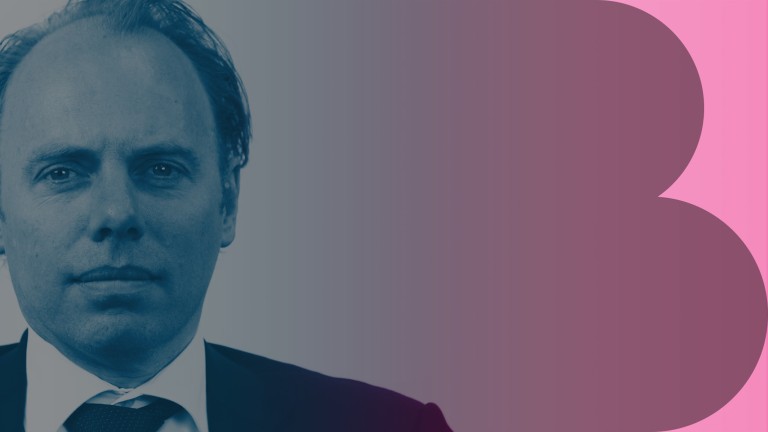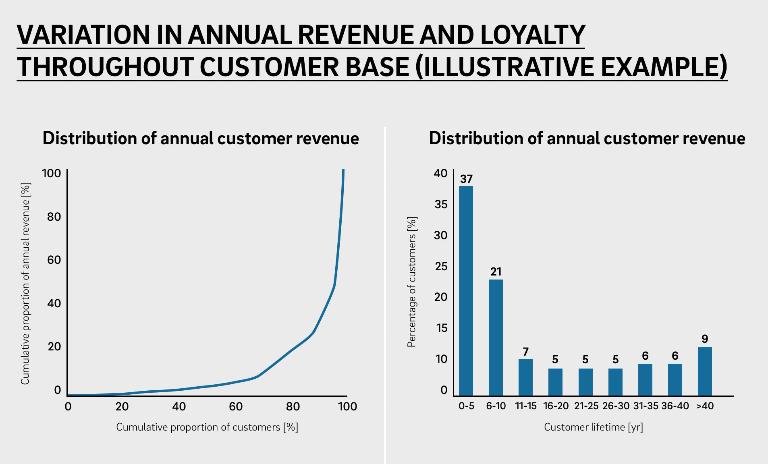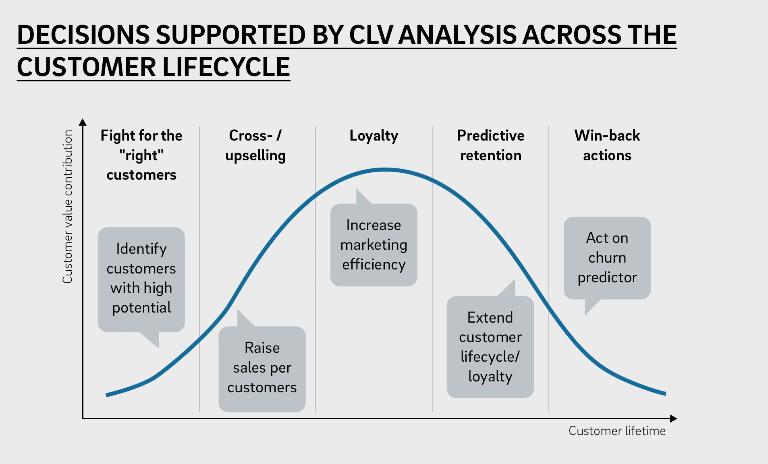

Understanding your customer base

Companies are at the brink of a new paradigm shift where the nexus of value lies in the customer rather than the shareholder. Companies are tweaking their core principles to foster outstanding experiences and thus create value for their customers.
But "the customer" isn't carved in stone, and there is no single formula for the "customer experience". Creating value for customers is about more than making sure employees are polite on the phone or that website text is appealing. It is about making better decisions across the entire lifetime of each individual customer. To do this, and to fully embrace the paradigm switch, companies have to center customer value at all levels of their organizations.

Heterogeneity in customer base
According to Gartner research in 2014, 89% of businesses expected customer experience to be their primary differentiator by 2017. With each customer, you’ve got one shot to get it right. Get it wrong, and you lose them to your competitor. But not all customers are created equal. "The" customer no longer exists. Some represent a great deal of value to your company; others not at all.

Figure A shows a typical distribution of revenue and loyalty across a customer base. The contrast between short-term value and long-term loyalty illustrates the heterogeneous nature in all customer bases, meaning that not all customers themselves are equally valuable to a firm. Even in customer bases that seemed homogeneous (educated women of 25-35 years old), we saw a high heterogeneity. But many companies ignore the differences, oversimplify their base, and use a one-size-fits-all formula (e.g. the NPS) that not only overlooks differences between customers, but also between business models.
A metric that truly supports decision-making
Direct contact with a customer service agent, a signed football when opening a bank account, or even discounts to the movies – these are just a few examples of ways companies may try to charm their customers. However, rarely do companies track the value of their customers before and after such campaigns. ROI of marketing spend is calculated superficially and only after the following financial quarter. Models are rarely dynamic or allow for attribution variables to be evaluated afterwards and future cash flows to be properly taken into account. This kind of shallow approach to the customer base leads to ill-informed decision-making and ultimately to missed opportunities.
To optimize resources across their customer base, companies should dare to step into the deep end of more sophisticated metrics. Metrics that help companies understand where they can create and extract customer value. In marketing campaigns, for example, there is considerable untapped potential in:
- Reallocating cross-channel spend for effective customer acquisition
- Prioritizing efforts to engage certain customer segments over others
- Pivoting customer service efforts toward valuable customers most likely to churn
- Focusing product development efforts to appeal to tomorrow’s best customers
Customer lifetime value
Customer lifetime value (CLV) is the foundation of a deeper approach to and understanding of your customers. CLV predicts profits over your entire relationship with a particular customer, from the moment they become a target to the moment they leave. Figure B illustrates a few of the decisions that managers may face along the course of a customer's typical lifecycle, where knowing their CLV could greatly support retention efforts.

CLV also accounts for heterogeneity in the customer base. By identifying high value customers and what makes them profitable, CLV allows a business to pin down what differentiates their best customers from their worst, how to keep their best customers happy, and how average customers can become valuable ones.
Switching to CLV as the metric of choice allows a business to serve its customer base more effectively. Importantly, the predictive model's level of sophistication can vary depending on the data and analytical capabilities available.
